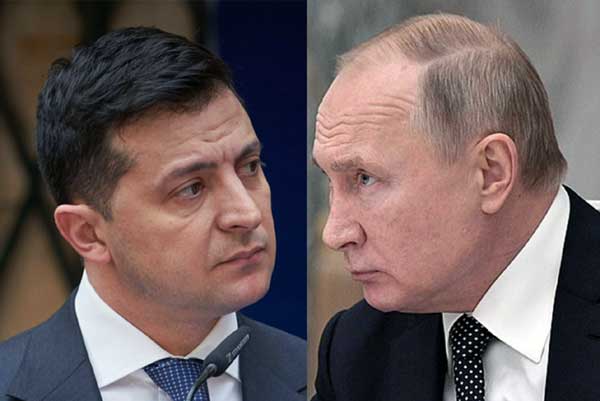The U.S. has played a quiet but insidious role in the war as Ukrainian troops have made stunning gains in a counteroffensive that dealt an embarrassing blow to Russian forces. Kyiv’s military strategy, which has allowed it to take back thousands of square kilometers worth of Russian territorial gains in Ukraine within days, is the accumulation of months’ worth of planning helped by U.S. war modeling and expertise. In addition, artillery and heavy weapons provided by the U.S. have provided immediate firepower and long-term confidence that Ukraine’s troops will remain equipped for the longer fight.
Ukrainian troops had taken back nearly the entire Kharkiv province in the northeast and continued to liberate several villages in the southern Kherson region, according to officials in the country. The gains are part of a two-front counteroffensive that began at the start of September and made major headway — particularly in Kharkiv, where Ukrainian troops’ lightning-fast advance seemed to catch Russians forces on the back foot and forced them to rapidly retreat.
President Zelenskyy said earlier that Ukrainian forces had retaken 6,000 square kilometers (2,317 square miles) of Russian-held territory since the beginning of the month — about 3,400 kilometers (2,113 miles) of that in the north just in the last week. The counteroffensive was the result of months of discussions, war strategizing and intelligence sharing between senior U.S. and Ukrainian officials, as well as a steady buildup of Ukrainian firepower with the help of U.S. weapons shipments, according to defence officials and experts.
Zelenskyy in midsummer relayed to his top military brass that he wanted to make a major push to show that Ukraine could kick back at the Russian incursion, and he had his generals create a plan for a broad offensive across the south and east, reported CNN. The strategy, which was then shared with U.S. defense officials, was assessed to likely fail, and the Ukrainians went back to the drawing board, according to The New York Times.
U.S. weapons, including precision armaments such as the High Mobility Artillery Rocket System, which allows the Ukrainians to precisely strike and take out high-value Kremlin targets, and then bolstered the carefully planned operations said Steven Horrell, a senior fellow at the Center for European Policy Analysis.
The U.S. has committed nearly $15 billion in lethal aid to Ukraine since the start of the Feb. 24 invasion. And since April, the U.S. government has also led a 50-country effort known as the Ukraine Contact Group to coordinate the flow of military assistance to Kyiv.
Despite Ukraine’s successes — with country officials calling it one of the major turning points of the war — others have warned the fight is still far from over. United Nations Secretary-General António Guterres said he thinks a peace deal to end the conflict isn’t likely anytime soon. The U.S. defence officials point out that the Russians still have large amounts of manpower and weapons in Ukraine and still hold important territory, including key cities and towns in the easternmost Luhansk region.
Secretary of State Antony Blinken announced an additional $600 million in military assistance for Ukraine. “Together with our Allies and partners, we are delivering the arms and equipment that Ukraine’s forces are utilising so effectively as they continue their successful counter-offensive against Russia’s invasion,” Blinken wrote in a State Department release. He authorized the 21st shipment of military munitions from the U.S. to Ukraine since September 2021, which will include arms and other equipment from the Defence Department. A statement from the Department of Defence said the package included more ammunition for High Mobility Artillery Rocket Systems (HIMARS); 36,000 rounds of 105mmm artillery; 1,000 precision-guided 155mm artillery rounds; and four counter-artillery radars, among other equipment.
President Vladimir V. Putin on 30 September asserted that Russia would take control of four Ukrainian regions and decried the United States for “Satanism” in a speech that marked an escalation in Moscow’s war against Ukraine and positioned Russia, in starkly confrontational terms, as fighting an existential battle with Western elites he deemed “the enemy.”
Speaking to hundreds of Russian lawmakers and governors in a grand Kremlin hall, Putin said that the residents of the four regions — which are still partially controlled by Ukrainian forces — would become Russia’s citizens “forever.” He then held a signing ceremony with the Russian-installed heads of those regions to start the official annexation process, before clasping hands with them and chanting “Russia! Russia!”
Putin’s address came against a backdrop of Russian embarrassments on the battlefield, where Ukraine’s forces have scored stunning victories in recent weeks in the east. Even as the Russian leader spoke, officials said the Ukrainian army had moved closer to encircling the Russian-occupied town of Lyman, a strategically important hub in the Donetsk region that lies inside the territory Putin is claiming.
Without saying so directly, Putin hinted that the role of nuclear weapons in war is on his mind. Describing the West as “deceitful and hypocritical through and through,” Putin noted that the United States was the only country to have used nuclear weapons in war. He then added: “By the way, they created a precedent.”
The situation in Ukraine is extremely volcanic and the chances of nuclear war cannot be ruled out if Russia continues to feel embarrassed for reverses in Ukraine. Therefore UN Security Council must go all out for a ceasefire. Prime Minister Modi can act as a mediator to avoid nuclear catastrophe because he has good relations both with Russia and the US.





